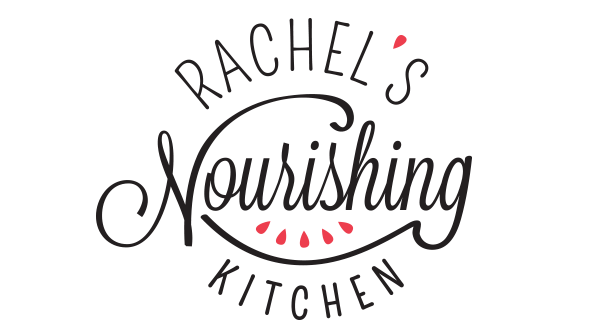This has been one of the most read posts on my blog. I’ve summarized most of it in this video, so feel free to check it out and read below for the full “concoction” recipe and links to learn more.
https://www.youtube.com/watch?v=TNXK0_cAph8
Sometimes the scientific evidence for something is lacking but anecdotal evidence is strong. That’s the case with what I’m about to share. You’re going to have a hard time finding someone who is going to be eager to fund research about the health benefits of a natural product like raw apple cider vinegar (ACV).
Why?
No one stands to benefit financially, which is the opposite of what happens in the case of pharmaceutical research when drug companies benefit.
I swear by ACV as a “cold kicker” and immune booster, which is largely anecdotal but is supported by the experiences of my family, friends, peers and others online.
Having said that, I absolutely LOVE what the folks at Authority Nutrition have to say:
“Lack of proof isn’t proof that something isn’t happening.”
The research on the benefits of apple cider that has been done is promising in the area of helping us control our blood sugar and keep us feeling satiated. Controlling blood sugar isn’t just something that concerns diabetics. When we control our blood sugar, we get off the mood and energy roller coaster and we feel fuller and satisfied longer, which may lead to eating less overall.
Apple cider vinegar helps stabilize our blood sugar by slowing what is known as “gastric emptying,” or the rate at which food leaves our stomach. If it takes longer for food to exit our stomach, we will feel fuller longer!
Not only that, but the main substance in apple cider vinegar is acetic acid, and it has been found to kill bacteria and prevent bacterial growth. This is one of the reasons, in addition to its digestive supportive properties, that ACV is often implicated as an immune booster. Anything that supports digestive health, boosts our overall health and well-being.
Using just any apple cider vinegar won’t provide all of the benefits. In this case, the type and brand really do matter. The ACV that I swear by that you can now find at just about any grocery store, every health food store, and online, is Bragg’s Raw Unfiltered Apple Cider Vinegar with “The Mother.”

Bragg’s Raw, Unfiltered Apple Cider Vinegar with “The Mother” – this is the bottle to buy!
Regular apple cider vinegar is clearer and kind of looks like apple juice; it’s been filtered. The good stuff (Bragg’s) contains some cobweb-like stuff at the bottom of the bottle called “The Mother,” which is made up of raw enzymes and bacteria that promote digestive health, as they feed the good bacteria in our gut.
Since about 70-80% of your immune system lies in and around your digestive tract (AKA your “gut”), a healthy gut = a healthy body and clear skin, among other benefits!
I started using this stuff about two years ago when I first came off of the acid reflux medication I had been taking for almost 10 years. Since then, I’ve been using it as the base for an energizing morning drink and whenever I start to feel like I’m coming down with something. I also love using it in salad dressings and to add flavor to a pan of sauteed greens.
My dad – a 67-year-old, 6-time Ironman triathlete – swears by it and calls it “the concoction.”

My Ironman dad swears by Bragg’s apple cider vinegar and “the concoction”
The moment he feels a tickle in his throat or a cold coming on, he throws back one of these drinks (recipe below) and says it prevents his symptoms from progressing! My husband and I do the same thing, and it really does work for us. While there is no research in the scientific literature to support those claims, we’re not the only people experiencing them. Bragg’s has a list of customer testimonials on their website.
For more information about the benefits of ACV, check out this link on MindBodyGreen, this article by Dr. Mercola, and this article about the 23 Research-Backed Benefits of ACV.
The “concoction” doesn’t taste amazing, but chances are, you’ve at least had a shot of something that didn’t taste great but drank it anyway, right? Try it for a week or two each morning and see if you notice a difference.
There isn’t an exact science to the recommended amount to drink, but two teaspoons seems to be the magic number.
*Because the acidity of the lemon juice and vinegar can potentially soften tooth enamel ALWAYS make sure you drink this with a straw AND rinse/swish your mouth with plain water after drinking it and BEFORE brushing your teeth.*
This is not intended to be medical advice. If you have questions or concerns about using apple cider vinegar or are currently taking medication to control blood sugar or insulin levels or stomach ulcers, talk with a naturopathic or functional medicine practitioner, which you can find here and here.


Pink Apple Cider Vinegar Drink
Try this drink before meals to stimulate your digestive system!
- 1-2 cups water (room temperature)
- 2 teaspoons raw apple cider vinegar (Bragg's brand with "the mother")
- 2 teaspoons fresh squeezed lemon juice (or Lakewood Organic lemon juice)
- 1 teaspoon pure cranberry juice (with no sugar added)
- Stir all ingredients together in a glass and drink through a glass straw.
- Rinse your mouth with clean water afterwards to reduce acidity on your teeth.
Optional add-ins:
- 1/8 – 1/4 tsp cinnamon
- 1/8 – 1/4 tsp turmeric
- ½ tsp raw honey
- 1-2 pinches of cayenne pepper
To protect your teeth, drink this with a straw. You can find fun glass straws here.
Always dilute ACV with water and avoid brushing your teeth immediately afterwards, so you’re not scrubbing the acid into your teeth. Rinse your mouth with plain water after drinking this as an additional protective step.

Ingredients for “the concoction”
Have you used ACV before? Feel free to share how you like to you use it in the comments below!
Like this:
Like Loading...




















 Look no further than today’s post (and the following one) for what you need to know about organic food.
Look no further than today’s post (and the following one) for what you need to know about organic food.




